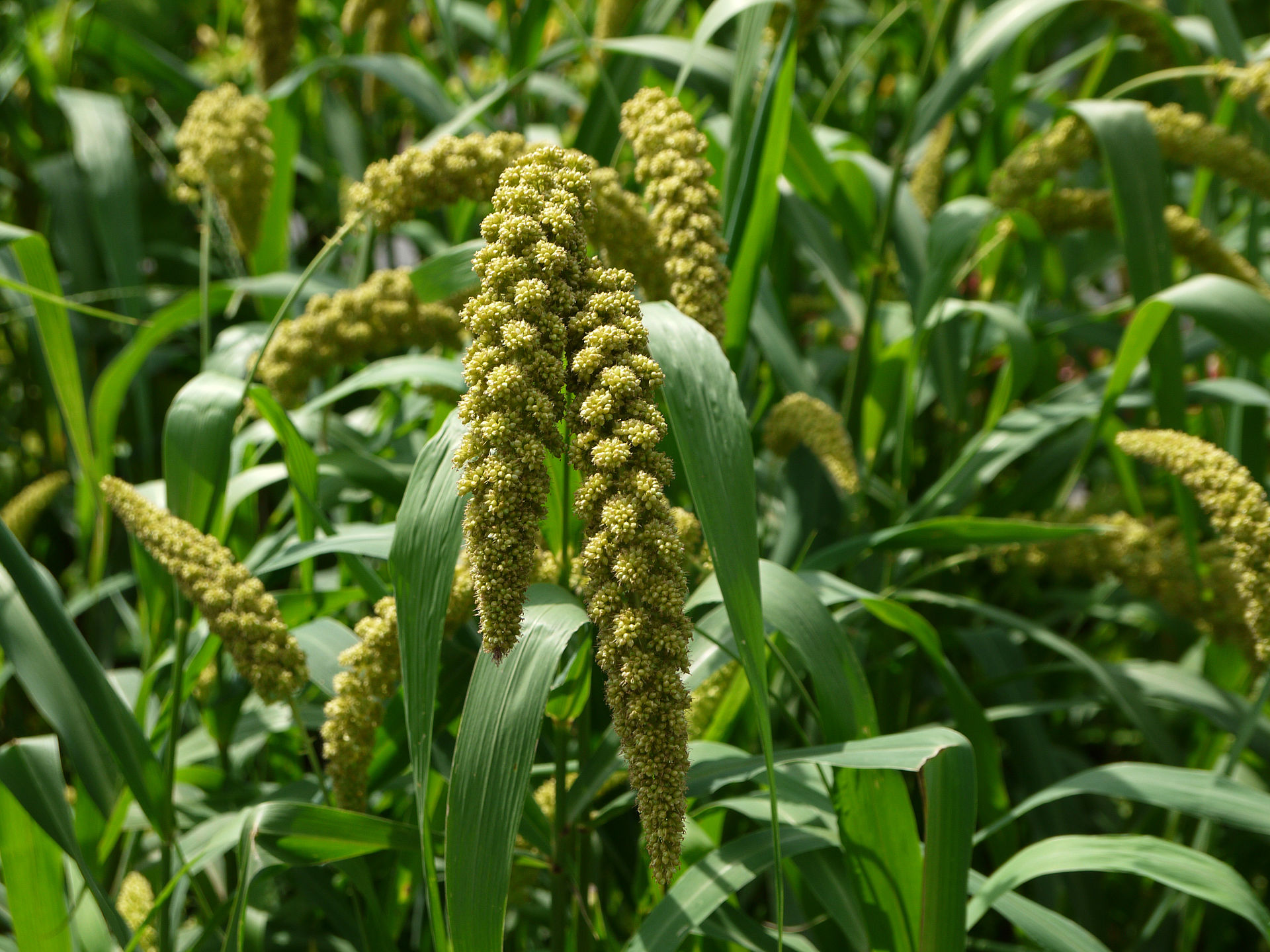Quinoa is not a true grain, but a pseudo-cereal grain or a pseudo-grain. Millets is nutritious whole grains that are often used as substitutes for rice or other grains in recipes. While they share some similarities, there are also some key differences between quinoa and millets. Here are some of the main differences:
- Nutritional Profile: Quinoa is a good source of protein, fiber, and several vitamins and minerals, including iron and magnesium. Millets are also high in fiber and some essential vitamins and minerals, but they are not as rich in protein as quinoa.
- Gluten Content: Quinoa is gluten-free, making it a good option for those with celiac disease or gluten intolerance. Some millet varieties, such as sorghum and finger millet, are also gluten-free, but others, like pearl millet, may contain gluten.
- Quinoa is higher in calories compared to Millets. If main goal is for weight loss, Millets have an advantage there.
- Quinoa has 3 times more calcium compared to Millets
- Millets has twice the amount of Niacin. Niacin is well know for reducing triglycerides and increasing the good HDL cholesterol.
- Millets have more fiber compared to Quinoa. Millets compared to Quinoa has lower glycemic load, and plays a role in helping diabetic patients.
- Flavor and Texture: Quinoa has a mild, nutty flavor and a fluffy texture when cooked. Millets have a range of flavors and textures depending on the variety, but they generally have a slightly nutty flavor and a chewy texture.
- Culinary Uses: Quinoa is a versatile grain that can be used in a variety of dishes, from salads and stir-fries to breakfast porridge. Millets are also versatile and can be used in dishes like porridge, pilaf, or as a rice substitute in curries and stews.
Here’s a table with the nutritional information for 1 cup (185 grams) of cooked quinoa:
| Nutrient | Amount | % Daily Value |
|---|---|---|
| Calories | 222 | 11% |
| Total Fat | 4.1 g | 5% |
| Saturated Fat | 0.5 g | 3% |
| Polyunsaturated Fat | 1.2 g | |
| Monounsaturated Fat | 1.1 g | |
| Trans Fat | 0 g | |
| Cholesterol | 0 mg | 0% |
| Sodium | 13.8 mg | 1% |
| Total Carbohydrate | 39.4 g | 14% |
| Dietary Fiber | 5.2 g | 19% |
| Sugars | 1.6 g | |
| Protein | 8.1 g | 16% |
| Vitamin D | 0 IU | 0% |
| Calcium | 31.5 mg | 3% |
| Iron | 2.8 mg | 16% |
| Potassium | 318 mg | 7% |
| Vitamin A | 0 IU | 0% |
| Vitamin C | 0 mg | 0% |
| Vitamin E | 1.2 mg | 6% |
| Vitamin K | 0.6 mcg | 1% |
| Thiamin | 0.2 mg | 13% |
| Riboflavin | 0.2 mg | 11% |
| Niacin | 1.2 mg | 6% |
| Vitamin B6 | 0.2 mg | 11% |
| Folate | 77.7 mcg | 19% |
| Vitamin B12 | 0 mcg | 0% |
| Pantothenic Acid | 0.6 mg | 12% |
| Phosphorus | 281.3 mg | 28% |
| Magnesium | 118.2 mg | 30% |
| Zinc | 2.0 mg | 13% |
| Copper | 0.4 mg | 18% |
| Manganese | 1.2 mg | 58% |
| Selenium | 6.2 mcg | 9% |
Note that the daily values are based on a 2,000-calorie diet and may vary depending on your individual needs.
Here’s a table with the nutritional information for 1 cup (174 grams) of cooked barnyard millet:
| Nutrient | Amount | % Daily Value |
|---|---|---|
| Calories | 128 | 6% |
| Total Fat | 1.7 g | 2% |
| Saturated Fat | 0.3 g | 1% |
| Polyunsaturated Fat | 0.6 g | |
| Monounsaturated Fat | 0.4 g | |
| Trans Fat | 0 g | |
| Cholesterol | 0 mg | 0% |
| Sodium | 2.6 mg | 0% |
| Total Carbohydrate | 25.6 g | 9% |
| Dietary Fiber | 6.1 g | 22% |
| Sugars | 0.1 g | |
| Protein | 3.6 g | 7% |
| Vitamin D | 0 IU | 0% |
| Calcium | 6.0 mg | 1% |
| Iron | 1.7 mg | 10% |
| Potassium | 75.2 mg | 2% |
| Vitamin A | 0 IU | 0% |
| Vitamin C | 0.5 mg | 1% |
| Vitamin E | 0.2 mg | 1% |
| Vitamin K | 0.6 mcg | 1% |
| Thiamin | 0.1 mg | 8% |
| Riboflavin | 0.1 mg | 6% |
| Niacin | 2.2 mg | 11% |
| Vitamin B6 | 0.1 mg | 5% |
| Folate | 6.5 mcg | 2% |
| Vitamin B12 | 0 mcg | 0% |
| Pantothenic Acid | 0.3 mg | 3% |
| Phosphorus | 90.3 mg | 9% |
| Magnesium | 35.0 mg | 9% |
| Zinc | 0.6 mg | 4% |
| Copper | 0.1 mg | 5% |
| Manganese | 0.7 mg | 36% |
| Selenium | 7.0 mcg | 10% |
Note that the daily values are based on a 2,000-calorie diet and may vary depending on your individual needs.
Overall, both quinoa and millets are nutritious whole grains that can be a healthy addition to a balanced diet. The choice between them may depend on personal taste, dietary needs, and culinary preferences.
